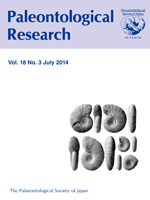The earliest freshwater colonisation by marine ostracods probably took place in the early Carboniferous. The first low-salinity habitats invaded by ostracods were likely ephemeral ponds near the shoreline, or fluvial, deltaic settings influenced by marine transgression events. The dominant factor in such environments is rapid change in salinity resulting from fluctuations in sea level, evaporation and precipitation, so the first freshwater colonisers are likely to have been tolerant euryhaline species. The most obvious adaptation to such environments is tolerance to low-salinity conditions. Modern studies report that ostracods possess efficient osmoregulatory mechanisms and are characterised by wide tolerance to different salinity regimes. They also exhibit other characteristics such as mixing reproductive mode, resting and/or desiccation-resistant eggs, and brood care which may facilitate colonisation of different regimes. Ostracods possess a calcified carapace containing high concentrations of calcium carbonate but shell formation may be less effective in poorly mineralised fresh waters. However, the mineral content of early Carboniferous coastal ponds was most probably sufficient to allow the development of calcified carapaces by the first freshwater species.
How to translate text using browser tools
1 July 2014
Stranded: The Conquest of Fresh Water by Marine Ostracods
Anna Iglikowska
ACCESS THE FULL ARTICLE

Paleontological Research
Vol. 18 • No. 3
July 2014
Vol. 18 • No. 3
July 2014
Calcification
Carboniferous Ostracoda
freshwater invasion
physiological adaptation




